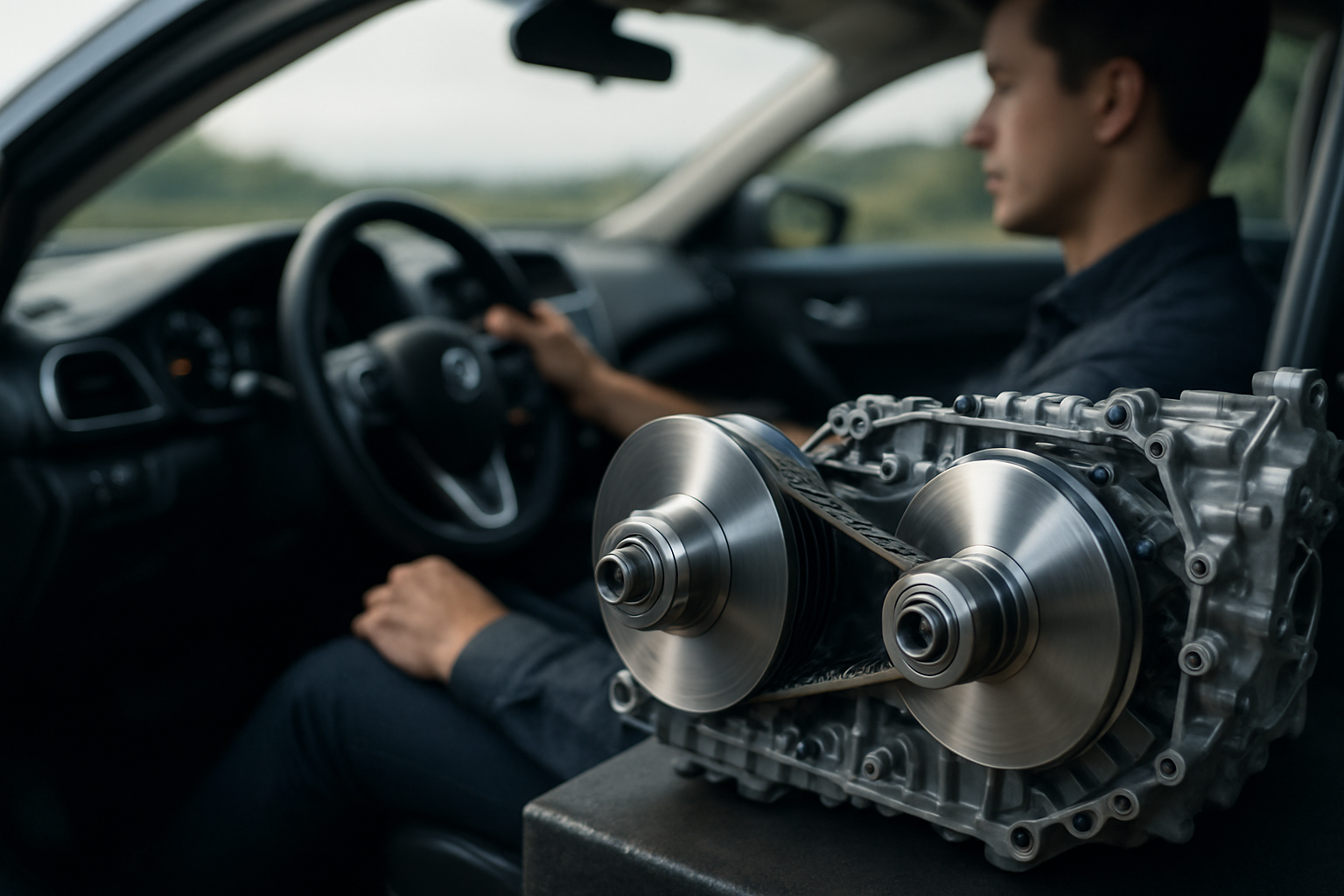Shifting Gears: The Intriguing Journey of Continuously Variable Transmissions (CVT)
Introduction: From the clunky manual gears of yesteryears to the ultra-smooth automatic transmissions of today, the world of automotive transmissions has undergone a significant transformation. One technology that has truly changed the game is the Continuously Variable Transmission (CVT). Woven with a rich history, the CVT has revolutionized our driving experiences, offering a more efficient, seamless way to keep our engines purring at their optimum performance.

A Glimpse into the Past: The Origins of CVT
The concept of CVTs isn’t a recent invention. The technology traces its roots back to the late 15th century, when the great polymath Leonardo da Vinci sketched the first known CVT design. However, it wasn’t until the 20th century that CVT started making its mark in the automotive industry. The Dutch automaker DAF was the first to commercially produce cars with CVTs in the late 1950s. Despite initial challenges related to durability and power handling, CVTs have progressively improved over the years, now offering a compelling alternative to conventional automatic and manual transmissions.
Understanding the Mechanism: How CVTs Work
Unlike traditional transmissions that use a set of fixed gears, a CVT operates on a simple yet ingenious principle: it uses a pair of variable-diameter pulleys and a belt or chain to provide an infinite number of gear ratios. This allows the engine to operate at its most efficient RPM, regardless of the vehicle’s speed. By eliminating the ‘steps’ between gears, CVTs offer smoother acceleration and improved fuel efficiency.
A Look at the Present: CVTs in Contemporary Cars
CVTs have come a long way since their inception. Today, from compact city cars to high-performance sports cars, CVTs have found their way into a wide range of vehicles. Major automakers like Toyota, Nissan, and Subaru have embraced CVTs due to their fuel efficiency and smooth performance. The technology has evolved to include ‘virtual gears’ to mimic the feel of traditional automatic transmissions, addressing one of the common criticisms of earlier CVTs.
Delving into the Impact: Advantages and Challenges
CVTs offer several advantages over traditional transmissions. They provide smoother, more responsive acceleration and enhanced fuel efficiency, especially in city driving conditions. However, they are not without their challenges. CVTs have been criticized for their ‘rubber band’ feel and the droning noise they produce during hard acceleration. Durability has also been a concern, but advancements in design and materials have significantly improved the reliability of modern CVTs.
Gazing into the Future: The Road Ahead for CVTs
As the automotive industry continues its relentless pursuit of efficiency and emission reduction, CVTs are poised to play a crucial role. With ongoing advancements in materials and design, the reliability and performance of CVTs are set to improve further. Moreover, the integration of CVTs with hybrid powertrains presents exciting possibilities for the future of eco-friendly transportation.
In conclusion, the journey of Continuously Variable Transmissions is a compelling testament to the power of innovation in the automotive industry. While the technology has had its share of challenges, its potential for delivering efficient, smooth, and environmentally friendly performance makes it a fascinating area of study for car enthusiasts and industry experts alike.





